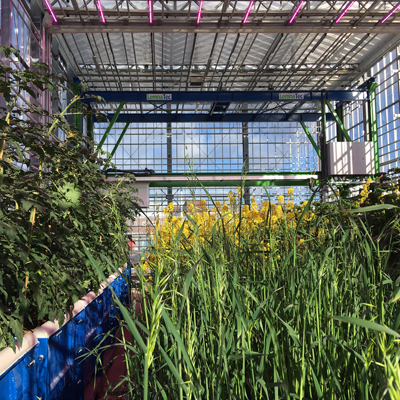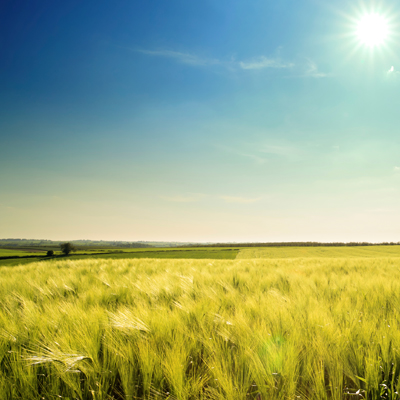At a glance
- Dates2005-continuing
- SponsorNational Environmental Research Council (NERC), Department for Environmental Food and Rural Affairs (Defra)
- FundedApprox. £1.5 million
Current and recent projects
- Soils Training And Research Studentships (STARS) Centre for Doctoral Training (NERC/BBSRC NE/M009106/1)
- Soil Agricultural Research and Innovation Accelerator (AgRIA) Centre for Doctoral Training (Rothamsted Research–Cranfield)
- SOILS-R-GGREAT (NE/P019498/1)
- A field laboratory for measuring whole-soil carbon balances and greenhouse gas fluxes under controlled temperature and moisture (Royal Society/Wolfson Foundation WL080021/Kirk)
Publications
McCloskey C., Otten W., Paterson E., Ingram B. & Kirk G.J.D. (2020) A field system for measuring plant and soil carbon fluxes using stable isotope methods. Eur. J. Soil Sci. doi:10.1111/ejss.13016.
Prout J.M., Shepherd K.D., McGrath S.P., Kirk G.J.D. & Haefele S.M. (2020) What is a good level of soil organic matter? An index based on organic carbon to clay ratio. Eur. J. Soil Sci. doi:10.1111/ejss.13012.
Lefebvre D., Williams A.G., Meersmans J., Kirk G.J.D., Sohi S., Goglio P. & Smith P. (2020) The potential for soil carbon sequestration using biochar from sugarcane residues: a modelling approach and a case study in São Paulo State, Brazil. Sci. Rep. doi:10.1038/s41598-020-76470-y.
Smith L.G., Kirk, G.J.D., Jones P.J., & Williams A.G. (2019) The greenhouse gas impacts of converting food production in England and Wales to organic methods. Nature Commun. 10, 4641, doi:10.1038/s41467-019-12622-7.
Kirk G.J.D. & Bellamy P.H. (2019) Analysis of changes in organic carbon in mineral soils across England and Wales using a simple single-pool model (vol 61, pg 406, 2010). Eur. J. Soil Sci. 70, 932–932. doi.org/10.1111/j.1365-2389.2010.01242.x
Smith L.G., Jones P.J., Kirk, G.J.D., Pearce B.D. & Williams A.G. (2018) Modelling the production impacts of a widespread conversion to organic agriculture in England and Wales. Land Use Policy, 76, 391–404. doi:10.1016/j.landusepol.2018.02.035.
Tipping E., Davies J.A.C., Henrys P., Kirk G.J.D., Lilly A., Dragosits U., Carnell E., Dore A., Sutton, M.A. & Tomlinson S. (2017) Long-term increases in soil carbon due to ecosystem fertilization by atmospheric nitrogen deposition demonstrated by regional-scale modelling and observations. Sci. Rep. 7, 1890. doi:10.1038/s41598-017-02002-w.
Kirk G.J.D. (2016) Carbon losses in the Alps. Nature Geosci. 9, 478–479. doi:10.1038/ngeo2747.
Lloyd D., Ritz K., Paterson E. & Kirk G.J.D. (2016) Effects of soil type and composition of rhizodeposits on rhizosphere priming phenomena. Soil Biol. Biochem. 103, 512–521. doi: 10.1016/j.soilbio.2016.10.002.
Kirk G.J.D., Versteegen A., Ritz K. & Milodowski A.E. (2015) A simple reactive-transport model of calcite precipitation in soils and other porous media. Geochim. Cosmochim. Acta, 153, 108–122. doi:10.1016/j.gca.2015.05.017.
Bellamy P.H., Loveland P.J., Bradley R.I., Lark R.M. & Kirk G.J.D. (2005) Carbon losses from all soils across England and Wales 1978–2003. Nature 437, 245–248. doi:10.1038/nature04038.
Above: Maps showing SOC/clay ratio.



